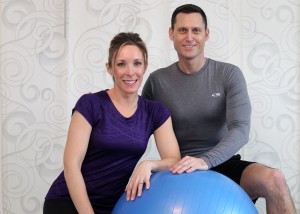High Intensity Interval Training, or HIIT, has been around for years but is finally coming into mainstream fitness for individuals of all ages and fitness levels. Several years ago, HIIT was incorporated into the training regimens of Olympic, Professional, and Collegiate athletes. The benefits of high intensity training for these athletes included higher VO2 Max, greater lung capacity, improved oxygen utilization, delayed onset of lactic acid build up in muscle cells, and greater overall output during practice, drills, games, and competitions.
That’s all good stuff, right? To the average person these improvements don’t mean much. What it does mean to the average person is this: burn a lot of calories in a short period of time while boosting your metabolism and improving your cardiovascular conditioning.
Many of my clients and friends complain of having to do long, tiresome, and boring cardio workouts that leave them wishing there was a better way to “get it done”. HIIT is the way to get it done in a shorter period of time but with a much higher intensity level. You really need to work your butt off to make this work for you!
To start, you must determine your Target Heart Rate Zone (THRZ). This can be done by clicking here. During HIIT, the goal is to get your heart rate up to the upper end of the THRZ, keep it there for a short period of time (1 -2 minutes), then bring it down to the middle of your THRZ for a short period of time, then back up again. This pattern should be performed for 20 to 30 minutes.
This type of training is called high intensity for a reason. It is challenging and tough to do. You will breath heavily and sweat a lot when performed properly. The goal is to get your heart rate up as high and as safe as possible in a short period of time in order to burn high amounts of calories. Depending on your training schedule, HIIT can be performed 2-3 times per week.
The following HIIT programs are some of my favorites to do. These are just examples. I recommend you consult with your physician or a professional fitness instructor before trying these HIIT programs. Be sure to monitor your heart rate to make sure you are at the upper end of your THRZ. It will take approximately 7-8 minutes to get the heart rate up that high. If your heart rate gets too high and you have trouble catching your breath, then lower your intensity by decreasing speed, incline, or pace of exercises. Good luck!
Treadmill HIIT (for beginners):
- Brisk walk at 4.5 mph at 2% incline for 2 min. (this may be a slow jog for some of you)
- Run or Jog at 6.0 mph at 1% incline for 1 min.
- Brisk walk at 4.0 mph at 5% incline for 2 min.
Repeat 4 more times then do 5 minute cool down (walk at 3.5 mph)
Total Time (including cool down): 30 minutes
Outside HIIT (for intermediate trainees):
- Jog at your own pace for 2 min.
- Sprint for 30 seconds
- Walk for 1 minute 30 seconds
Repeat 5 mores times then do 5 minute cool down (slow walk)
Total Time (including cool down): 25 minutes
HIIT Using Calisthenics (for advanced trainees):
- Jumping Jacks for 45 seconds
- Mountain Climbers for 30 seconds
- March in place for 30 seconds (for a rest; brings heart rate down a little)
- Burpees or Squat Thrusts for 45 seconds
- Scissor Jumps and Jabs for 30 seconds
- March in place for 30 seconds
- 10 Push-Ups
Repeat 5 more times then do 5 minute cool down (slow walk)
Approximate Total Time (including cool down): 20 minutes
As you can see, HIIT can be done a variety of ways. The ways to do High Intensity Interval Training is endless. The key items to focus on are your heart rate and your breathing. If either gets to high for your fitness level, then decrease your intensity.
Putting together a HIIT program takes a little bit of thinking and imagination and a lot of hard work and motivation. However, this type of exercise will certainly get you in shape, burn a high amount of calories, and keep your metabolism running high all day long.







Leave a Reply